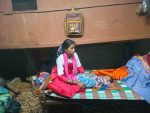By Virginia Saldanha
Mumbai: India has been declared “The world’s most dangerous country for women” by global experts who did a survey under the aegis of the Thomson Reuters foundation. It is sad but not surprising.
As a young widow with three infant children “unprotected by a man” I experienced the full impact of patriarchal attitudes towards vulnerable women in Indian society irrespective of religion, caste or economic status. The rape of a Canadian woman by a man she met at a pub in Delhi (reported June 27) is testimony to this.
As I joined the larger women’s movement in Mumbai and heard the testimonies of women’s experience of violence, it became clear how woman’s vulnerability to violence is rooted in culture and the socialisation she is put through from infancy. The focus is on her outward appearance. Girls aspire to an image that society creates for them; an image meant to highlight her sexuality to attract men. So, cat-calls, remarks on women’s clothes, bodies, etc. are meant to be taken as compliments and not abuse as it is under law today.
A girl is socialised to please her husband, be a good cook, be respectful to her husband, in-laws, etc., in short become a doormat for the males in the family. Whereas boys are socialised to grow up free, confident and unfettered by any kind of rules or regulations.
The landmark Mathura rape case in 1972, galvanized the women of India to demand laws to protect women from rape. The UN decade on women 1975-1985 was instrumental in bringing about awareness to many more women in India on issues of violence and woman’s dignity. As a result, today India has the best laws to protect women from all kinds of violence and sexual abuse ranging from cat-calls, passing lewd remarks on women to rape. NGOs have sprung up to protect women’s rights and help survivors of violence, but still we are the worst place for women in the world?
Take a good look at the position of women. Women are taught that they should not bring disgrace to their community or family – where 70% of violence to women takes place. So, women are afraid to come forward and report violence. If she does have the courage to do so, she has to face ostracization. Most women are not economically independent nor have the time or means to fight cases.
The police do not inspire any confidence in women to approach them, then there is the issue of corruption. If the man concerned is more powerful, which is usually the case, the woman knows she stands little chance to fight a case against him. Women who are already traumatised by violence, do not want to experience further trauma by going public and fighting what she perceives as a loosing battle. So, she remains silent and turns to prayer and religiosity to deal with her trauma. Religiosity is fraught with its own pitfalls!
The silence behind violence is the most pernicious outcome of women’s socialization in India. This silence gives predators and perpetrators the confidence to continue their exploitation of women.
Is there a way out?
My experience of reaching out to the most vulnerable women in society – through my own domestic worker who was a Dalit and the sole breadwinner for her family says “YES.” Layered by vulnerabilities of caste, class and gender, the domestic workers were exploited at home and at work. She turned over her entire salary to her drunken husband. Her employers extracted maximum labor for minimum wages. Some had stories of sexual abuse by the man of the household they worked.
These women were completely unaware of their rights as women and citizens of the country or of the laws that protect them. I set about creating this awareness among them and in a few years, these women gained confidence to bargain for better working conditions and salaries. A Savings scheme helped them save part of their salary. Awareness education with support is empowerment.
We need to change the socialization process through education and awareness programs. The Church is the best agency able to do this through its network of educational institutions, parishes and numerous courses it offers to its congregations.
The Gender Policy for the Catholic Church in India was released by the CBCI in 2010. The policy for protection against Sexual Harassment in the Workplace was released in 2017. If widely publicised and disseminated they have the potential of preventing and supporting victims of violence. But like the social teachings of the Church they remain the Indian Catholic Church’s best kept secret. Clearly Policies are not enough as their dissemination and implementation is another question.
The biggest challenge for feminist men and women in the Church and in the country is to change the entrenched patriarchal structures and mindsets that give perpetrators of violence the impunity to continue to inflict violence on women. As long as women lack power and confidence that they will be supported by the structures, they will continue to be vulnerable. Sensitive leadership and structures of law enforcement that are committed to social change are vital to make India safe for women.
(Virginia Saldanha is the secretary of the Indian Christian Women Movement. The Mumbai-based lay woman theologian had earlier served the Federation of Asian Bishops’ Conferences and the Catholic Bishops’ Conference as the executive secretary of their departments for women.)










